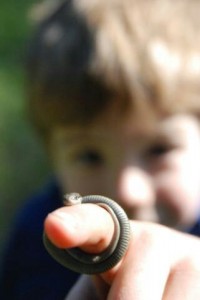Imaginative Ecological Education

Originally appears in the Winter 2016 issue
weave |wēv|
- make (basketwork or a wreath) by interlacing rods or flowers.
- make (a complex story or pattern) from a number of interconnected elements:
- (weave something into) include an element in (such as a story or pattern): interpretative comments are woven into the narrative[1]
Imaginative ecological educators are weavers. They weave relationships that connect knowledge, the body, and the natural and cultural contexts. They also weave wonder into the everyday experience of students in schools. Thinking about teaching as weaving can contribute to understanding what is distinctive about Imaginative Ecological Education (IEE), as a pedagogical approach. Imaginative and ecological teaching requires mindfulness in interconnecting students with knowledge and place. Weaving also requires artistry; each cloth is a work of art that reflects the diversity of the context in which it was created. There is a degree of artistry in good teaching that we tend to forget amidst ongoing drives to standardize curricula and universalize the educational experience of students. Weaving, as metaphor, reminds us of some of the often forgotten dimensions of teaching.
This content is restricted to subscribers only.
If you are not yet a subscriber, please consider taking out a subscription here.
If you are an existing subscriber, kindly log in or contact us at info@greenteacher.com for more information.





